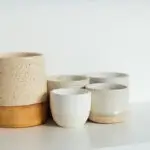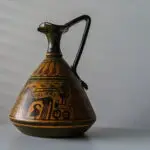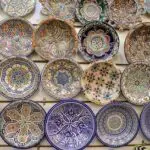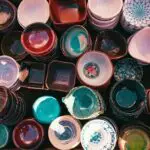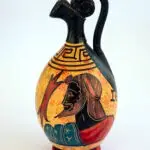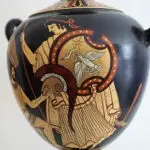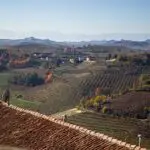Mediterranean pottery making has a long history spanning thousands of years. From ancient Greeks to modern artisans, it remains a vital part of the region’s culture. Techniques, tools, and materials are passed down through generations, preserving the essence of this timeless craft.
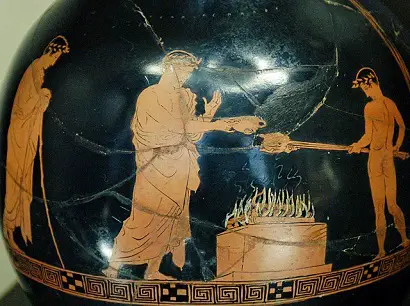
One of the most well-known styles of Mediterranean pottery is ancient Greek pottery, which often featured depictions inspired by Greek mythology. The Greeks, including those from Corinth, were known for their intricate vase designs and red-figure and black-figure techniques. These styles involved painting human figures and other designs onto the surface of the kylix, with a black background for the former and a red background for the latter. The skill and artistry required to create these Greek vases were highly valued in ancient Athenian Greece, and the techniques used by ancient Greek potters continued to influence modern pottery making.
Mediterranean pottery making involves firing the clay in kilns to create durable and functional ware pieces. Ancient times saw the use of kilns to bake clay, a practice still employed today. Modern potters honor tradition while crafting both aesthetically pleasing and practical ceramic items, from simple vases to intricate geometric designs. Mediterranean pottery making remains a significant aspect of the region’s cultural heritage.
Tools and Materials Used in Mediterranean Pottery Making
Pottery-making has been an important part of Mediterranean culture for centuries. The process of creating pottery vessels involves a variety of tools and materials that have been refined over time.
Clay
Clay is the primary material used in pottery making. The type of clay used can vary depending on the location and desired outcome. In Ancient Greece, Attic clay was commonly used, while in Italy, clay from the region of Tuscany was popular. In Cyprus, potters used local red clay.
Slip
Slip is a liquid form of clay that is used to coat the surface of pottery vessels. It is often used to create decorative designs or to add texture to the surface of the vessel. Slip can be made from the same clay used to create the vessel or from a different type of clay.
Pottery Wheel
The potter’s wheel is a tool that has been used in pottery making for thousands of years. It allows potters to create symmetrical vessels quickly and efficiently. The pottery wheel was first used in the Old Kingdom of Egypt and was later introduced to the Mediterranean region.
Kiln
The kiln is used to fire the pottery vessels and harden them into their final form. Kilns can be fueled by wood, coal, or gas. In Ancient Greece, kilns were often built into hillsides to take advantage of the natural slope for ventilation.
Glaze
Glaze is a coating that is applied to the surface of pottery vessels to create a smooth, glossy finish. It can also be used to add color to the vessel. Glazes can be made from a variety of materials, including feldspar, quartz, and kaolin.
Pottery making has a rich history in the Mediterranean region, with many different styles and techniques developed over time. From the faience of Ancient Egypt to the Corinthian pottery of Ancient Greece, the art of pottery making, including the renowned Greek art, has played an important role in Mediterranean culture. Today, pottery making continues to be an important craft in the region and around the world.
Traditional Mediterranean Pottery Firing Techniques
Firing
Firing is the process of heating clay to a specific temperature in order to harden it into a durable material. Traditional Mediterranean pottery firing techniques involve two types of firing: low-temperature firing and high-temperature firing. Low-temperature firing is used for earthenware, while high-temperature firing is used for stoneware and porcelain.
Kilns
Traditional Mediterranean pottery firing techniques involve the use of kilns. Kilns are ovens used for firing pottery. They come in different sizes and shapes and can be fueled by wood, gas, or electricity. Traditional Mediterranean kilns are typically made of brick or clay and are fired from the bottom.
Black-figure Technique
The black-figure style is a traditional Mediterranean pottery technique that involves painting the pottery with a black slip, which is a mixture of clay and water. The design is then scratched into the slip to reveal the red clay underneath. The pottery is then fired in a kiln, which turns the black slip black and hardens the clay.
Red-figure Technique
The red-figure technique is a traditional Mediterranean pottery painting technique that involves painting the pottery with a red slip, which is a mixture of clay and water. The design is then painted onto the slip using a brush. The pottery is then fired in a kiln, which turns the red slip black and hardens the clay. Red-figure pottery became popular in the Mediterranean in the 5th century BC and was used to create highly detailed and realistic images on pottery.
In conclusion, traditional Mediterranean pottery firing techniques involve the use of kilns and two types of firing: low-temperature firing and high-temperature firing. Black-figure pottery involves painting the pottery with a black slip and scratching the design into the slip, while the red-figure technique involves painting the pottery with a red slip and painting the design onto the slip. These techniques have been used for centuries to create beautiful and functional pottery in the Mediterranean.
The Process of Mediterranean Pottery Making
Mediterranean pottery making is a traditional art form that has been passed down from generation to generation. The process involves several steps that require a great deal of skill and patience.
Challenges and Skills
One of the biggest challenges of Mediterranean pottery making is the delicate balance between form and function. Pottery vessels need to be aesthetically pleasing while also being practical and functional. This requires a high level of skill and attention to detail.
Another challenge is the firing process. Mediterranean potters typically use high-temperature firing techniques to create durable and long-lasting pottery vessels. However, this process requires a great deal of skill and experience to ensure that the pottery is not damaged during the firing process.
Painters
Mediterranean pottery making is also known for its intricate and detailed painted designs. Many Mediterranean potters are also skilled painters who use a variety of techniques to create beautiful designs on their pottery vessels.
Some of the most popular designs found on Mediterranean pottery include animals, geometric patterns, and scenes from literature and mythology. These designs are often painted using a variety of colors and techniques to create a unique and visually stunning finished product.
Pottery Vessels
Mediterranean pottery vessels come in a wide variety of shapes and sizes made of clay. From cups and bowls to large jars and vases, there is a Mediterranean pottery vessel for every occasion, showcasing the shapes of Greek.
One of the most famous types of Mediterranean pottery is Greek pottery. Ancient Greeks were known for their beautiful and intricate pottery designs, especially during the Archaic period. Greek pottery is often decorated with scenes from mythology and literature, as well as intricate geometric styles.
In conclusion, Mediterranean pottery making is a time-honored tradition that requires a great deal of skill and patience. From the delicate balance between form and function to the intricate painted designs, Mediterranean pottery vessels are truly works of art.
- The Top Restaurants Specializing in Truffle Dishes - August 10, 2023
- Truffle Panna Cotta: A Decadent Dessert Recipe for Truffle Lovers - August 7, 2023
- Truffle Scrambled Eggs: A Luxurious Breakfast Delight - August 7, 2023

